| Srl | Item |
| 1 |
ID:
123471


|
|
|
| 2 |
ID:
119766
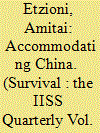

|
|
|
| 3 |
ID:
129854


|
|
|
|
|
| Publication |
2014.
|
| Summary/Abstract |
Three case studies from U.S. naval history emphasize the importance of applying lessons learned in making changes to the way we fight.
|
|
|
|
|
|
|
|
|
|
|
|
|
|
|
|
| 4 |
ID:
130074
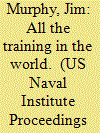

|
|
|
|
|
| Publication |
2014.
|
| Summary/Abstract |
My opinion has not changed-although my explanation might-and this is an issue that continues to plague the armed forces. The Navy has even embraced sub-themes for Sexual Assault Awareness Month (SAAM); for the first half of April, the message is "Live Our Values." That was my intended meaning: Sexual assault is contrary to our core values.
My friend's criticism was part of a cordial, yet emotionally driven discussion, and it was enlightening. It was accompanied by the story of a young sailor who faced blatant sexual harassment from her leading petty officer.
That sailor was subjected to repeated inappropriate comments in public, and more graphic comments in smaller groups. These remarks were overheard by a chief petty officer who asked the junior sailor if she wanted him to talk to the petty officer. Harassment and assault are two very different things, but a lax attitude toward the former diminishes an atmosphere of respect, the overarching theme of SAAM 2014.
|
|
|
|
|
|
|
|
|
|
|
|
|
|
|
|
| 5 |
ID:
131944


|
|
|
| 6 |
ID:
130313


|
|
|
| 7 |
ID:
113160


|
|
|
|
|
| Publication |
2012.
|
| Summary/Abstract |
The announcement of a reformed US defence strategy by President Barack Obama and Secretary of Defense Leon Panetta in early January 2012 confirmed a pivot towards the Asia-Pacific as commitments to war fighting in the Middle East and Central Asia subside. Obama, Panetta and General Martin Dempsey, the chairman of the Joint Chiefs of Staff, briefed reporters on 5 January on America's new strategic guidance document, 'Sustaining US Leadership: Priorities for 21st Century Defense'. The product of a review of US defence priorities 'at a moment of transition' for the nation, the document notes that the United States will 'of necessity rebalance toward the Asia-Pacific region'. The principle of the Asia pivot was also signalled by Secretary of State Hillary Clinton in a November 2011 Foreign Policy article in which she noted that 'one of the most important tasks of American statecraft over the next decade will … be to lock in a substantially increased investment - diplomatic, economic, strategic, and otherwise - in the Asia-Pacific region'.
|
|
|
|
|
|
|
|
|
|
|
|
|
|
|
|
| 8 |
ID:
132632
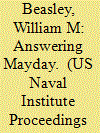

|
|
|
|
|
| Publication |
2014.
|
| Summary/Abstract |
Following the outbreak of World War I, President Woodrow Wilson explained his policy: "A powerful Navy we have always regarded as our proper and natural means of defence…. We shall take leave to be strong upon the seas, in the future as in the past; and there will be no thought of offence or provocation in that. Our ships are our natural bulwarks. Today, our natural bulwarks are crumbling. Seth Cropsey's 2013 book Mayday: the decline of American Naval Supremacy warns that if left unaltered, current defence cuts and procurement policy will destroy the global presence of the US navy.
|
|
|
|
|
|
|
|
|
|
|
|
|
|
|
|
| 9 |
ID:
130329


|
|
|
| 10 |
ID:
123467


|
|
|
| 11 |
ID:
182316
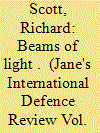

|
|
|
| 12 |
ID:
179027


|
|
|
|
|
| Summary/Abstract |
This article argues that the US Navy’s roles (which have historically been bifurcated between warfighting and political use of force) manifest in its organisational culture as two different concepts of war: the US Navy as diplomatic actor and the US Navy as warfighting force. The conflict between these different concepts of war can be seen in the current debate about the definition and function of presence. The debate about presence is not just theoretical, but represents a deep and enduring conflict within the Navy as an organisation about its concept of war. Since the end of WWII, the Navy has been designing its fleet architecture according to a Mahanian concept of war, despite the preponderance of non-lethal missions and activities. The result is a mismatch between platforms and tasks.
|
|
|
|
|
|
|
|
|
|
|
|
|
|
|
|
| 13 |
ID:
130520
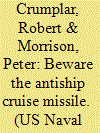

|
|
|
| 14 |
ID:
123481
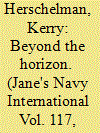

|
|
|
| 15 |
ID:
187685


|
|
|
| 16 |
ID:
132165


|
|
|
|
|
| Publication |
2014.
|
| Summary/Abstract |
In 1991, U.S. President George H. W. Bush decided to retire almost all the tactical nuclear weapons operated by the U.S. Army and the U.S. Navy. His reasons were simple: these short-range weapons were militarily useless and imposed significant burdens on the armed forces in terms of money, manpower, and time. Twenty-three years later, only one type of tactical nuclear weapon remains in the U.S. inventory: the B-61 gravity bomb. In addition to the several hundred B-61s located at home, the United States currently deploys around 180 of them in Europe, at bases in Belgium, Germany, Italy, the Netherlands, and Turkey. In the event of a nuclear conflict on the continent, NATO would deliver the bombs via U.S.-built F-15 or F-16 aircraft or European-built Tornado fighters, operated by some combination of Belgian, Dutch, German, Italian, and U.S. crews. Originally intended to prevent Soviet forces from penetrating Western Europe, the planes could travel as far east as Russia. But owing to their slower speed and lower altitude, they would be much more vulnerable to Russia's ground-based air defenses than would longer-range strategic bombers and missiles.
|
|
|
|
|
|
|
|
|
|
|
|
|
|
|
|
| 17 |
ID:
129659


|
|
|
| 18 |
ID:
130518
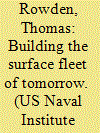

|
|
|
| 19 |
ID:
131751
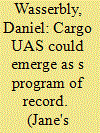

|
|
|
|
|
| Publication |
2014.
|
| Summary/Abstract |
the cargo unmanned aircraft system (UASs) landscape is poised to soon evolve as the systems appear in favour with US Army and US Marine Corps (USMC) planners, and congress is pressing the Pentagon to settle on a program of record for unmanned cargo delivery
|
|
|
|
|
|
|
|
|
|
|
|
|
|
|
|
| 20 |
ID:
173057


|
|
|